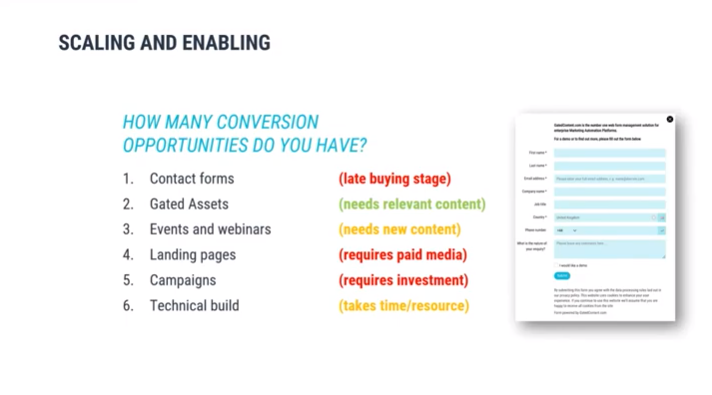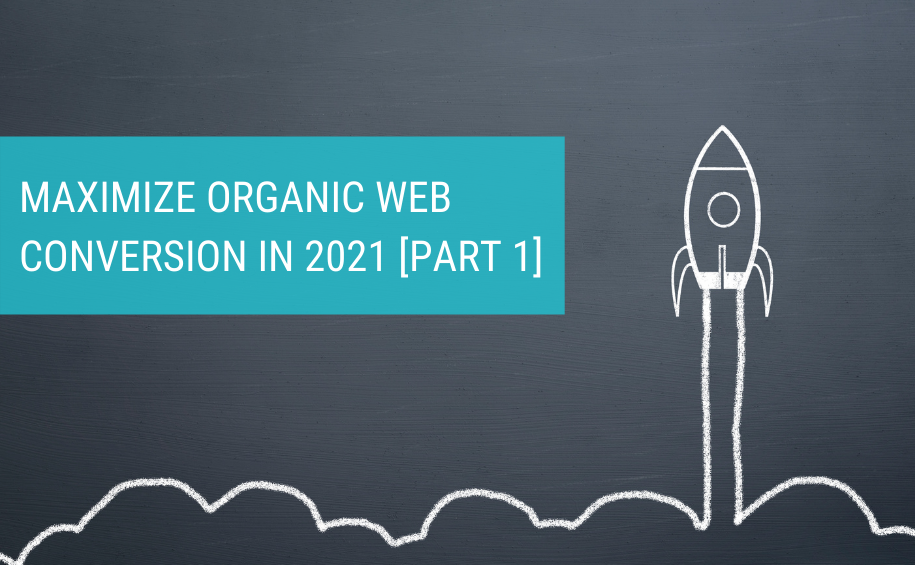COVID-19 has meant a significant change in B2B and B2C consumer behaviour. Most buyer’s time is now being spent at home, you guessed it, on the internet.
Countries with a lockdown have experienced a minimum increase of 30% web traffic. Even in a crisis, brands have an opportunity to take advantage of that uplift if they understand what their target audience needs from them at this time.
GatedContent.com recently spoke at B2B Marketing Virtual on the subject, 2020: The Year Web Conversion Became Business Critical. We led with advice about how to make the most of this year’s surge in web traffic, in the face of dropping direct response conversions and a lack of opportunity for face to face selling.
72% of marketers are telling us that in spite of decreased budgets, their marketing goals are likely to stay the same or even increase going into 2021, meaning conversion rate optimization has never been more important. This post will give you a starting point for optimization and provide some tactical ideas for you to test along the way.
Aspire to earn customer trust in this period of disruption
Before you begin this exercise to maximize web conversion from organic traffic, you need to get clear on the big picture. The reality that the stats and anecdotal feedback are all supporting is that the majority of prospects are looking for authentic help and a deep understanding of their challenges. At this time they’re more interested in fostering connections for the future than making purchase decisions right now.
We’ve gathered some resources below that might help you think differently about alternative engagement strategies for your audiences during this period of long and uncertain buyer journeys, positioning you for success later down the line.
Capitalize on segmentation strategies
Given the new digital landscape and cautious mindset in which buyers are making purchasing decisions, companies that capitalize on segmentation strategies will gain an edge. Such strategies will also enable more precise allocation of marketing efforts towards those areas with the greatest revenue potential. Check out this guide to segmentation from B2B International.
Collaborative sales and marketing
Now has never been a better time to solidify the relationship between sales and marketing. We need to work together to create customer experiences that are appropriate to the landscape we’re operating in, repurposing content to make it softer and less sales driven and utilizing the extra time sales teams now have to create insightful webinars or live streams. For further inspiration and ideas for how marketing can now engage with sales, based on the shift in B2B buyer behavior, check out this from Mckinsey.
Live streaming
Live streaming is a powerful, organic and authentic way to connect with your target audience and personalize your message in a way that’s unique compared to other marketing mediums. For a complete guide to live streaming check out Neil Patel’s blog here.
Step one to improve organic web conversion
Now we’re clear on the big picture, the best place to start with web conversion is to conduct an audit of all current conversion opportunities you have out in the public domain. The list below will help get you started.

Traditionally marketers are focused on campaign execution and activity, but in the current climate creating and running new campaigns isn’t easy as they require high levels of resource investment. You’ll see from the list above, landing pages; campaigns and technical builds all require time or paid investment. Contact forms, direct outreach to sales and product demo requests tend to happen later in the buyer journey which isn’t happening at the moment.
Your best bet for organic conversion is to focus on your gated asset strategy and virtual events/ webinars. Whilst budgets are tight, focus your efforts on how to use existing assets, or easily repurposed formats to drive greater conversions from organic web traffic.
Step two to improve organic web conversion
Look at how you can do more with what you’ve already got. Work smarter in a way that focuses specifically on your organic web traffic.
Leverage content to convert
Begin by reviewing your highest performing content assets. Gather a list of these and brainstorm how you might repackage these into different formats. For example, if you’ve got a webinar that converted particularly well at the time it was released, could you break it down into a shorter, easily digestible advice series? Similarly, could you identify high performing blogs, and turn that into a five minute video? Integrate this new content across your web user journey sitewide to further optimize your SEO and increase the likelihood of content being found. Make sure you review what content is gated and what’s not. Are you offering too much for free? Or not enough? You need to strike a balance between lead capture for long term nurture, and positioning your business as genuinely helpful.
Convert more organic traffic
Review high traffic landing pages and optimize the most relevant ones for search intent. The key here is to think about your content in the context of your SEO. You might have created content in the past that was themed to a specific campaign. But now you want that content to be searchable and relevant to your website’s keyword strategy. Then create and add relevant CTAs around the intent for that page.
Scale across divisions/regions
Repackage these first two steps and consider if you can’t execute new campaigns how can you look after the evergreen engagement. Talk your regional teams through that process, start using tools like Google Analytics or Search Console, create dashboards and train your teams to implement a repeatable process that adheres to their region’s SEO strategy.
Step three to improve organic web conversion
Look at how you can remove technical barriers. Making more of the traffic you have usually relies on web development or technical input. The necessity for highly skilled resource slows activity down and makes it hard to scale. Enabling your teams to deploy CRO tests and changes quickly will be cost effective and allow you to carry out more activity in the time you have available.
A good example of this type of enablement is form standards. If you’ve got different regions publishing different forms, can you work out a way that you can publish those forms via a template that doesn’t require technical resource to deploy changes? This enables teams to experiment quickly and test different types of conversions.
Demonstrating a ‘what good looks like’ approach to organic CRO will really help your wider teams understand what you’re trying to achieve. Going on to provide them the tools to make this process easy for them to implement themselves, as well as encouraging them to drive innovation through experimentation will all contribute towards your success.
The second installment of this guide will cover in depth ways to improve conversion optimization once your prospect has found your content and using the data you’ve gathered from these conversions to inform your marketing decision making going forward. Part 2 will be published soon, keep an eye out.
How much you could improve your web conversion by?
By analyzing your current web conversion rates and optimization practices, we can estimate the projected uplift in leads you can expect from working with GatedContent.com.
